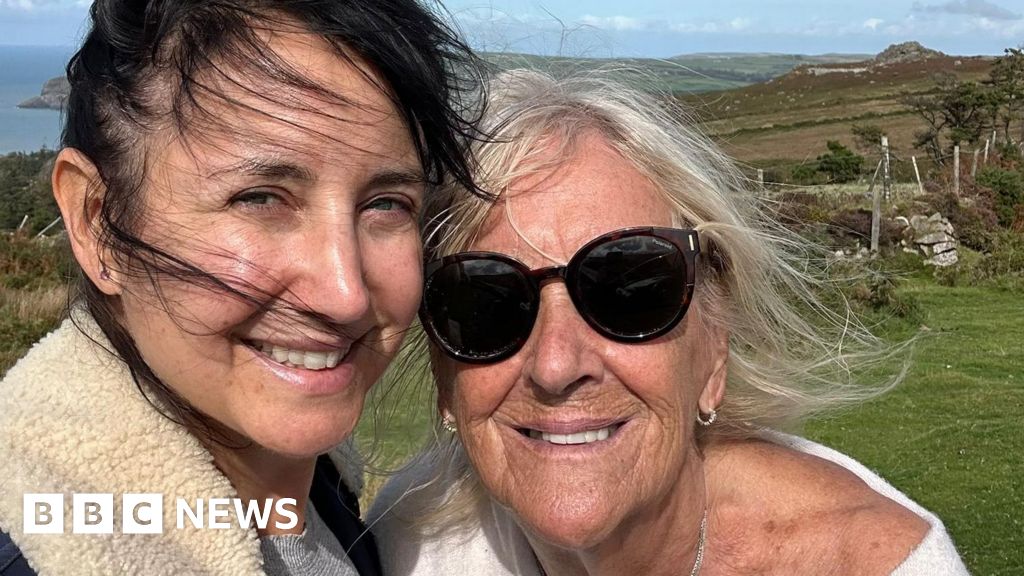Health
Mother’s Bold Decision: Donating Body to Science Sparks Reflection

Conversations about death often evoke discomfort, yet for Patsy Cohen, discussing her wishes for afterlife became essential. At the age of 86, she revealed to her daughter her desire to donate her body to medical science, a decision that came as a surprise and prompted profound reflection on the implications of such a choice.
Patsy’s journey with bowl cancer a few years ago inspired her to ensure her body would serve a purpose after her passing. She expressed a strong conviction that her donation might aid future medical professionals, as approximately 1,300 individuals in the United Kingdom choose to donate their bodies to education annually. During their conversation, she mentioned having already contacted a university to arrange the donation, leaving her daughter torn between admiration and confusion.
Curiosity naturally followed as her daughter sought to understand more about the process of body donation. This led her to create a documentary at Cardiff University, where she gained rare access to observe how donated bodies are used in medical education. The university’s anatomy center provides medical students with real human bodies, allowing them to learn anatomy in an immersive environment.
Dr. Hannah Shaw, who leads the anatomy education team, emphasized the importance of hands-on experience. “There really is no substitute for being able to see, touch and feel real anatomy,” she stated. This practical approach contrasts with advancements in technology that have made it possible to replicate human anatomy in 3D on screens. Still, Dr. Shaw believes that actual bodies offer an unparalleled educational experience.
Students like Freya Gillson, a 19-year-old medical student at Cardiff, echoed this sentiment. “Working with donors is incredible. They are our very first patients and you do develop a connection with them – they’re our silent teachers,” she remarked.
When a donor passes away, their body is promptly transported to the anatomy center. There, it is preserved, and, with the donor’s consent, parts may be removed for further teaching. Donors can remain in the center for up to three years. Upon completion of their educational purpose, the university arranges for the bodies to be placed in coffins for funeral directors, with families choosing between cremation or burial. The university covers the associated funeral costs, allowing families to navigate their grief while awaiting final arrangements.
The family of Joy Sesay, another donor, faced this situation. Joy’s daughter, Jenny, noted her mother’s ethos of helping others, which led to her decision to donate her body. Joy left behind a large family, and they held memorial services while awaiting cremation. Jenny’s granddaughter, AJ, expressed feelings of “in limbo” without a traditional funeral, highlighting the unique emotional challenges faced by families of donors.
In recent years, the number of individuals wishing to donate their bodies has declined in the UK, with Cardiff University experiencing a 50% reduction in registrations since 2020. Despite this, 154 people signed up in 2024, indicating a continued interest. Universities recommend that potential donors communicate their wishes to their families to facilitate understanding and support.
At the end of each academic year, Cardiff University hosts a memorial event for families and students to connect. This gathering allows families to see the impact of their loved ones’ donations, fostering a sense of closure and connection. Freya reflected on the significance of seeing pictures of donors with their families, stating, “It made it all very real.”
For Joy’s family, the journey continues beyond the donation. “You think it might be a one-off gift of your body, but that’s not the case,” her daughter Carol explained. “The fact is, you open the book and the good that her body will do… we just didn’t realize the enormity and importance of what she did.”
As Patsy Cohen navigates her remaining years, her daughter finds comfort in knowing her mother’s wishes. “I feel when I’m not here, I’m not going to be wasted, it’s going to do some good and help make a better doctor,” Patsy stated, emphasizing her determination to contribute positively to society even after her passing.
This decision has also inspired her daughter to consider a similar path, affirming a legacy of altruism and educational support. As the family prepares for a future that may hold the inevitable goodbye, they take pride in knowing that Patsy’s choice will help shape the next generation of medical professionals.
-

 Health3 months ago
Health3 months agoNeurologist Warns Excessive Use of Supplements Can Harm Brain
-

 Health3 months ago
Health3 months agoFiona Phillips’ Husband Shares Heartfelt Update on Her Alzheimer’s Journey
-

 Science1 month ago
Science1 month agoBrian Cox Addresses Claims of Alien Probe in 3I/ATLAS Discovery
-

 Science1 month ago
Science1 month agoNASA Investigates Unusual Comet 3I/ATLAS; New Findings Emerge
-

 Science4 weeks ago
Science4 weeks agoScientists Examine 3I/ATLAS: Alien Artifact or Cosmic Oddity?
-

 Entertainment4 months ago
Entertainment4 months agoKerry Katona Discusses Future Baby Plans and Brian McFadden’s Wedding
-

 Science4 weeks ago
Science4 weeks agoNASA Investigates Speedy Object 3I/ATLAS, Sparking Speculation
-

 Entertainment4 months ago
Entertainment4 months agoEmmerdale Faces Tension as Dylan and April’s Lives Hang in the Balance
-

 World3 months ago
World3 months agoCole Palmer’s Cryptic Message to Kobbie Mainoo Following Loan Talks
-

 Science4 weeks ago
Science4 weeks agoNASA Scientists Explore Origins of 3I/ATLAS, a Fast-Moving Visitor
-

 Entertainment4 months ago
Entertainment4 months agoLove Island Star Toni Laite’s Mother Expresses Disappointment Over Coupling Decision
-

 Entertainment3 months ago
Entertainment3 months agoMajor Cast Changes at Coronation Street: Exits and Returns in 2025









